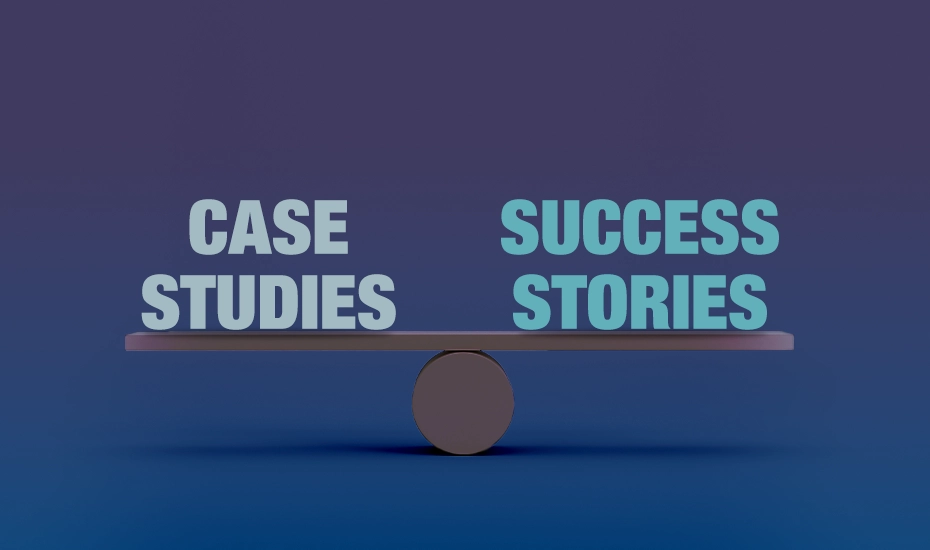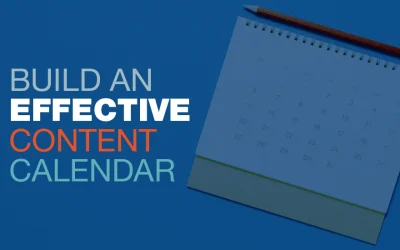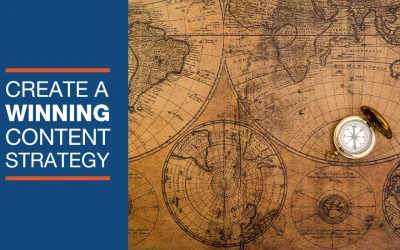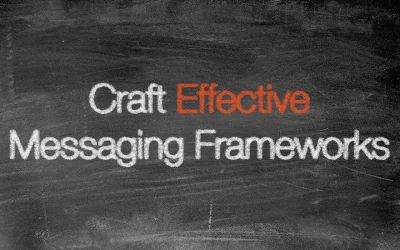Content marketing is critical to effectively market your B2B services and solutions. Your prospects come to your website for a few main reasons. Some may end up there unintentionally. However, most are there because they saw something on social media or in a Google search that led them to your website.
You need to effectively capture the attention of every visitor and keep them engaged. Then, you need to move them through the process from being a website visitor to becoming a client. The only way to do that is to share relevant, engaging, and informative content that is easy to access and understand.
Two very effective types of content marketing that help turn prospects into clients are case studies and success stories. When evaluating the most important types of content, Marketing Charts found that case studies (and success stories) were the top format for buyers at the middle of the funnel.
Both types of content help persuade and inform your clients by building trust and showcasing your company’s knowledge and skills. They are a type of persuasive social proof that focuses on real-life examples. Yet, these pieces are not identical and there are some key differences and use cases you should know.
What is a B2B Marketing Case Study?
A marketing case study is a type of content marketing that describes in detail how your company’s solution or service made a significant impact on a client’s business.
Elements of a Marketing Case Study
- Details about who the company is and who their customers are.
- The challenge or problem being faced.
- What the client has tried so far.
- Overview and description of a new alternative marketing strategy and its implementation.
- The results that were achieved.
- Analysis of key takeaways.
B2B case studies follow a structured format. The introduction section details who the case study is about, including an overview of what their business does and the types of clients they work with. So if you are writing a case study for your own business, you would share details about your own company and types of clients in the opening section.
From there, a formal description of a key marketing challenge is discussed, with relevant facts, figures, and data. For example, a B2B tech company in the security space could write about how one of their enterprise clients needed help securing their POS or other sensitive data. This section should provide any key facts and data that are relevant to the client and their situation.
After the challenge that needs to be solved has been fully explained, the case study should talk about what the client has already tried. This helps paint a vivid picture for the reader so they have a better understanding of the situation.
Next, introduce the alternative strategy that your company recommended. You can share details about the strategy without giving away anything proprietary. Also, explain how this strategy was implemented, how long it took to implement it, and what the process was like. You can include customer quotes here to strengthen claims and provide credibility.
Now for the fun part – the results! Tell your readers how the suggested strategy worked! Share data on how things improved for the client. You can include charts, graphs, bullet points with key improvements and metrics, etc.
The case study should conclude with an analysis of key takeaways. Aim to provide valuable lessons for your reader that can be applied to future projects of their own. Case Studies are technical, but they are a powerful tool that helps you build trust and effectively market your services.
What is a B2B Marketing Success Story?
Similar to case studies, marketing success stories are also a type of content marketing. Success stories are more of a narrative that showcases a customer’s experience with your product or service, highlighting how it helped them overcome challenges and achieve success.
Elements of a Marketing Success Story
- Usually a printed or digital document, but the format can vary.
- Overview of the company and the client featured in the success story
- Description of the challenge being faced by the client.
- Results after working together, with a stronger emphasis on the client’s overall experience.
Success stories are much less data-driven, but they can still include various stats and metrics. However, they are more like a beefed-up client testimonial and include more quotes from clients than hard data. Success stories are meant to share real-world examples of how your company helped existing clients without getting very technical.
Success story formats can vary. They are most often in a written format, usually presented as a well-designed digital PDF. They can also be in video or audio format as well. The tone of a success story is generally less formal and the content is more engaging because it is a story that begins by sharing an overview of both companies with a greater emphasis on the client’s business. Then, the client’s business challenge is explained. They generally end by discussing how a company’s services, solutions, or products helped the client solve their challenge.
Success stories go beyond facts and figures and focus more on the human element of partnering with clients. They help your business connect with potential customers in a meaningful way and are less technical, but they still help demonstrate your company’s value.
Case Studies vs. Success Stories
There are some shared “ingredients” in Case Studies and Success Stories.
Shared Characteristics:
Both case studies and success stories illustrate how a company’s products and services solved a business challenge for a client.
They generally include elements like customer testimonials and visual aids to enhance the narrative.
Both can be leveraged as effective marketing tools to build trust and credibility with your target audience.
Key Differences:
- Case studies are more formal, data-driven, and analytical
- Success stories are informal, narrative-oriented, and focus on the human aspect of business decisions.
Case Study:
Nature: Case studies are technical content pieces that provide a detailed and analytical view of how a company’s solution or service impacted a client’s success.
Focus: They emphasize measurable outcomes, such as data, metrics, and statistics, to showcase the strategy’s impact.
Structure: Case studies follow a structured format, including an introduction, problem, solution, implementation, results, and analysis.
Formality: They tend to be more formal in tone and often include technical details.
Purpose: Case studies are used for in-depth analysis, often targeting a technical or decision-making audience.
Success Story:
Nature: Success stories are content marketing narratives that focus on a customer’s experience with a product or service, highlighting how it helped them overcome challenges and achieve success.
Focus: They emphasize the human impact of business decisions and often include testimonials, quotes, and personal anecdotes.
Structure: Success stories may vary in format, from short videos to well-designed one-page PDFs, and have a more flexible structure.
Formality: They tend to be more informal and narrative-oriented, often providing relatable and engaging content.
Purpose: Success stories aim to connect with potential customers on a personal level, showcasing the practical application of the product or service.
Should You Use a Case Study or a Success Story?
Like many things in marketing, the answer to this question is “it depends.” Case studies and success stories are both valuable marketing documents. Your sales team can benefit from both types of content as well. At the same time, they cater to different audience preferences and serve distinct purposes in marketing.
There are often multiple B2B buyers in the decision-making process who have different values, interests, concerns, preferences, buying motives, and objectives. Most B2B companies often have to sell to multiple decision-makers, according to research from Marketing Charts.
Case studies are great for a more technical audience. They can help persuade IT and accounting & finance folks who tend to prefer numbers and stats over stories. They can also help break down more complex areas of your service, software, or solution to make them more digestible.
Customer success stories are a little more simple to create but can be more effective as a sales brochure for CEOs and CMOs. Due to their story-like nature, success stories are easier to read and skim and can be much more engaging, especially for people at the top of your content funnel.
If you only have the resources to create one type of document, we would recommend a success story over a case study. They are relatively simple to produce with some basic preparation and writing. Also, with the increase in video calling and recording software, capturing interviews with clients is easier than in the past. Case studies require more research, time, and technical writing abilities—and possibly, approvals from your client’s legal team. Both are persuasive marketing resources, and you need a mix of both. If you don’t have either, start with success stories.
Hate Writing? We Can Help!
Both case studies and success stories can be challenging to write. They require planning, organization, and a host of other skills, like writing, graphic design, and more. If you need help crafting effective marketing collateral, we can help. Our team has written hundreds of success stories and case studies for clients that have helped them reach their target audience and grow their businesses. Schedule a free, no obligation, no pressure marketing call with our team of experts today.





0 Comments